Sculptural Jewelry and Cautious Optimism Reign at VicenzaOro
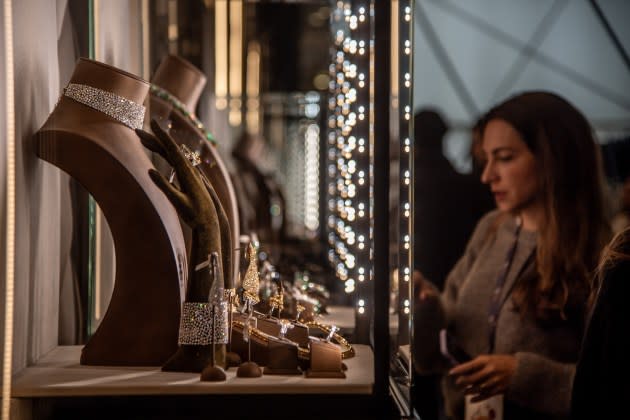
VICENZA, Italy — The latest edition of VicenzaOro wasn’t immune to current geopolitical tensions. During the five-day jewelry trade show — which is celebrating its 70th anniversary this year — a protest of about 500 people against the presence of exhibitors from Israel condemning the country’s actions in Gaza resulted in clashes outside the fairgrounds.
“The global situation is delicate. It’s true that there’ve been conflicts in the past, but there are obviously concerns,” said Massimo Gismondi, chief executive officer of the seventh-generation, family-run company Gismondi 1754. “But we’re also sensing a great wish to restart after a second half of 2023 that has been quite tense [business-wise].”
More from WWD
Vanessa Noel Stands by New York City Mayor Eric Adams, Scouts Shoe Museum Location
Kimaï Secures 250,000 Pound Investment on 'Dragon's Den' From Steven Bartlett
This impetus was reflected by the show’s record attendance, up 3 percent from last year, which previously held the all-time record in footfall.
“We’re blowing our 70 candles with a big smile,” said show director Marco Carniello, underscoring how the fair is continuing to gain ground and international appeal, attracting 1,300 exhibiting brands from 37 countries.
Italian Exhibition Group, the show’s organizer, declined to disclose exact numbers of visitors at the fair, which closed Jan. 23, but said the international ones hailing from 141 countries accounted for almost 60 percent of total attendance. In particular, visitors from elsewhere in Europe accounted for 53 percent of total overseas attendees, with strong delegations from Spain, Germany, France and Greece. Visitors from the Middle East, Asia, Turkey and North America accounted for 9.3 percent, 10.5 percent, 8 percent and 7.2 percent, respectively.
According to data released by Confindustria Moda’s research center on behalf of the national jewelry association Federorafi, exports of Italian jewelry increased 11.3 percent in the first nine months of 2023 to exceed 8 billion euros, despite the slowdown in the third quarter of the year.
Switzerland was the largest export market for Italian jewelry, accounting for 15 percent of the total and growing 31.2 percent compared to the same period in 2022. It was followed by the U.S. and France, where exports of Italian jewelry grew 5.3 percent and 15.8 percent, respectively.
Overall, in the first nine months of 2023, Italian jewelry company sales grew 8.1 percent, with projections estimating an increase between 5 percent and 7 percent for the full year versus 2022, when total sales were 10.87 billion euros.
“I believe 2023 was another positive year for the industry in general, and especially for those doing high jewelry,” said Giorgio Visconti’s CEO Andrea Visconti. “When there are complex times and uncertainties, jewelry doesn’t suffer as much as other categories. Sure, tensions are not good, they don’t favor consumers’ inclination to purchase, but I’ve never seen a direct correlation [between tensions] and sales of valuable goods… It’s difficult to make forecasts for this year but if companies succeed in being close to their clients and offering what they aspire to, I don’t see 2024 as a difficult year, but rather positive, instead.”
Roberto Coin, president of the Vicenza-based namesake company, echoed the optimistic approach, also boosted by his firm’s performance last year. Without disclosing exact figures, Coin said sales increased about 20 percent versus 2022, propelled by innovation in terms of products and the consolidation of the distribution strategies his company has implemented over the last few years. The firm will continue to build on the streak of franchised store openings in Middle Eastern countries and will cut the ribbon on a unit in Paris soon.
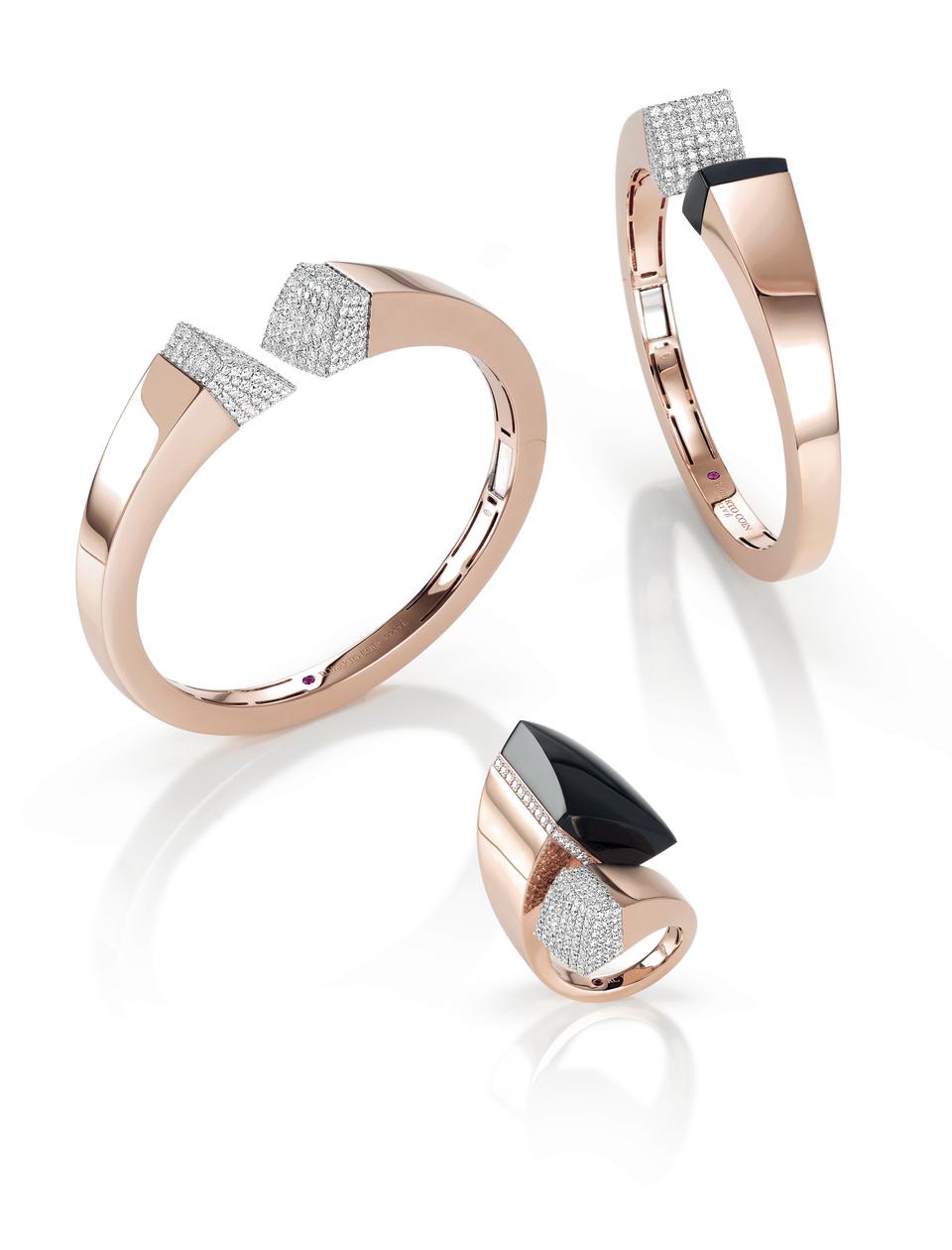
Ditto for Gismondi 1754, which ended 2023 opening its first store in Doha. This was part of a five-year deal the jeweler inked last year with Qatar’s Al Mana family to boost its retail and wholesale distribution in the Gulf Cooperation Council area. As part of the agreement, seven franchised stores are expected to open in the region over the next five years, including another unit in Doha, followed by openings in Bahrain, Kuwait, Saudi Arabia and Oman. Gismondi said the last touch point will be Dubai to ensure the brand gets in that luxury market with the “right brand awareness and reputation.”
The operation in Doha crowned a pivotal year for the publicly listed company, which shifted from a single-brand firm to a holding group thanks to a brisk M&A activity in 2023. First, it acquired the Vendorafa Lombardi brand, previously controlled by LVMH Moët Hennessy Louis Vuitton’s watches and jewelry division, for more than 600,000 euros.
Gismondi said the strategy going forward is to diversify the positioning of the two brands, with Gismondi focused on higher-end creations and Vendorafa offering more approachable lines for a younger clientele.
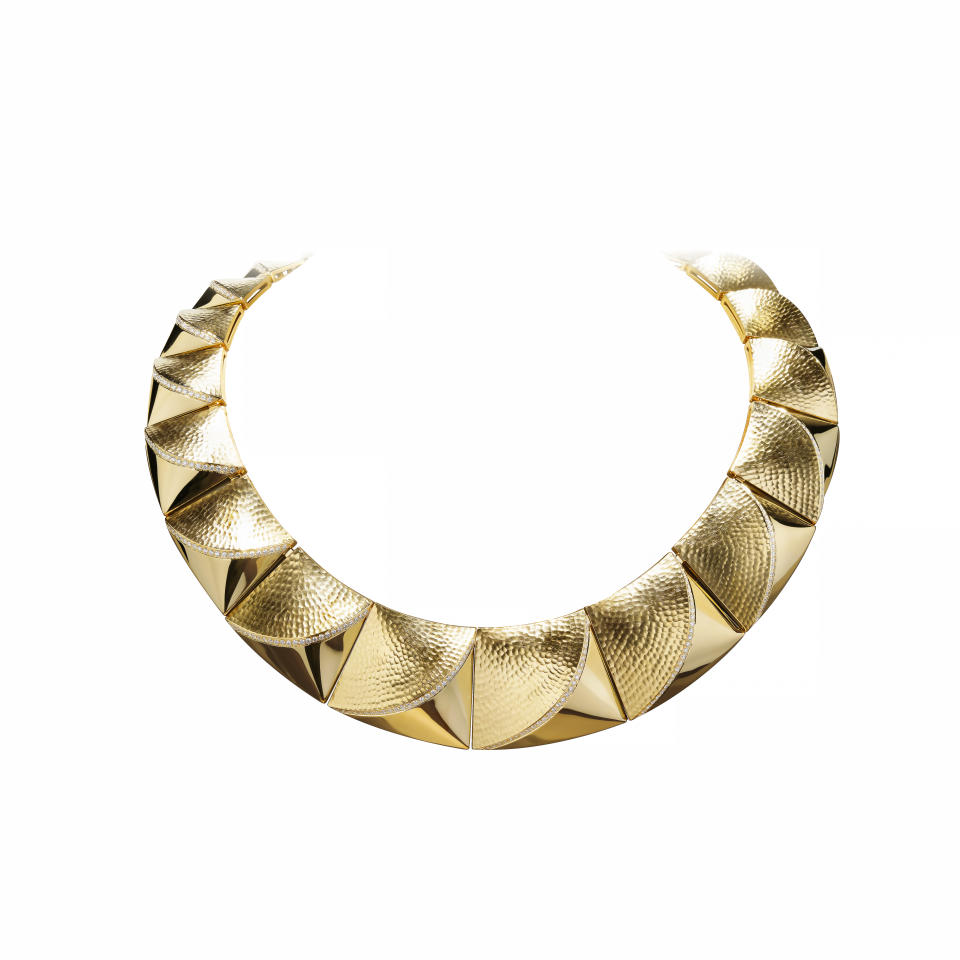
“We’re here at Vicenza also for this reason,” said the executive, adding that during the past eight months the group has focused on enhancing Vendorafa’s products and next will work on further building its brand awareness. “To be honest, it is very well known in the U.S., and that’s where we’re going to start from in terms of distribution,” said Gismondi, teasing that the first push in Europe will be in the first quarter of this year.
Gismondi highlighted the acquisition has been strategic not only because it expanded the company’s portfolio and product assortment but also “for an ethical and moral reason of safeguarding an historic Italian brand and the know-how that lies in Italy’s small to medium-sized companies.”
With the same spirit, the group took over the Hyperion Lab manufacturer, which Gismondi said he had eyed for three years. The deal is aimed at “securing the future of the company,” he said.
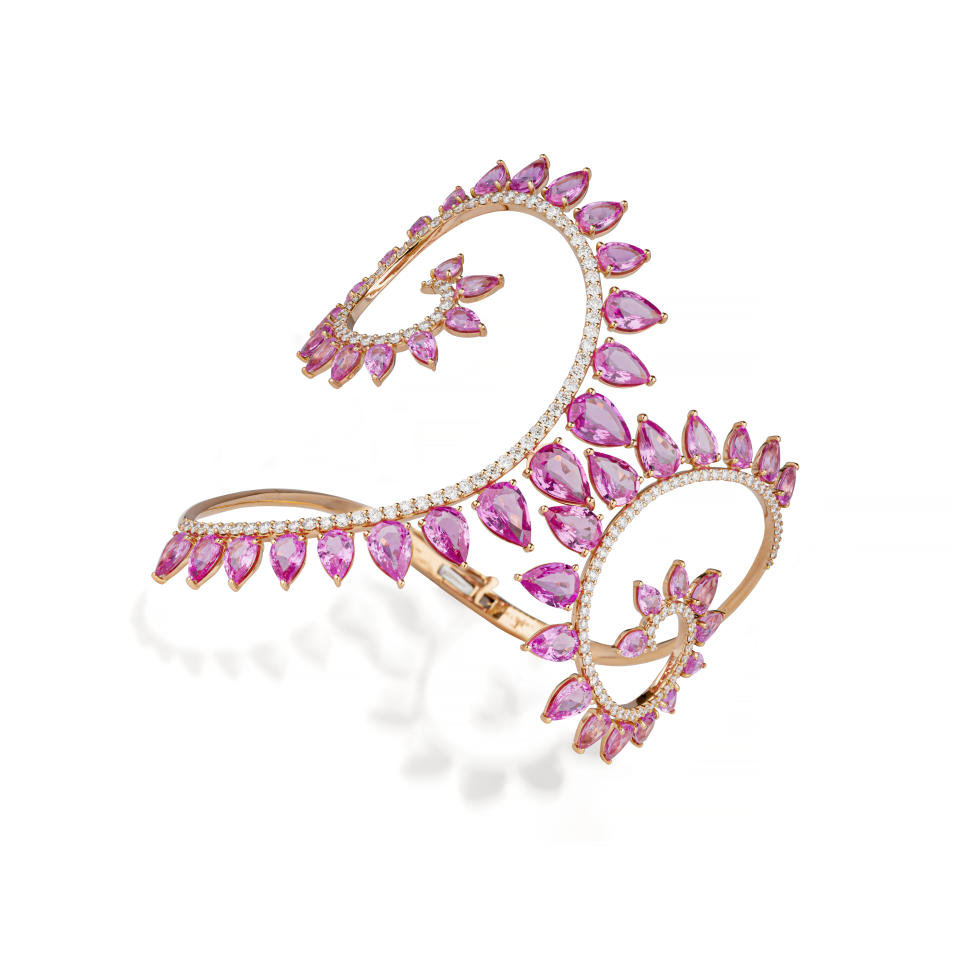
“All the big luxury groups are shopping here, acquiring our manufacturers and their skills. Three years ago we already decided to look for a player that could make us independent from the hegemony of multinationals. We can’t compete with their budgets in terms of marketing, so we have to play a different game,” continued Gismondi, stressing that Hyperion Lab will continue to act as a third-party supplier for other brands, with only 20 percent of its manufacturing capacity dedicated to the group’s production.
This year the group plans to move into a new 21,527-square-foot plant and expand its workforce. Revenues were flat in 2023 at $14 million, with the general slowdown in the second half of the year counterbalanced by a strong start to the year.
The company’s top market was still the U.S., which accounted for 40 percent of its total sales versus 24 percent in the previous year. In addition to the focus on the Middle East, Gismondi is looking to boost the company’s presence in Europe, starting with Germany.
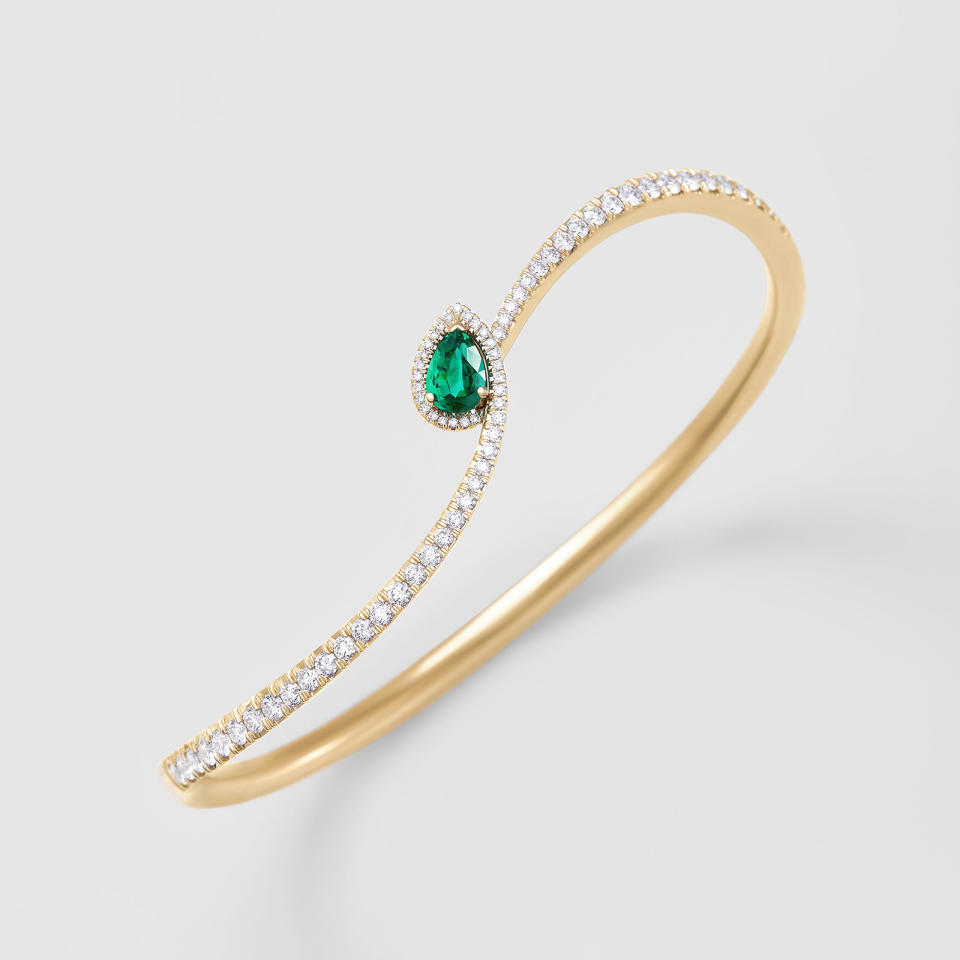
Visconti agreed on the importance of consolidating his company’s European presence by further enhancing brand awareness, which is already strong in the Benelux region and the Baltic countries. Extra effort in branding activities is being made in Asia, especially in China and Japan, where the firm returned last year after a 10-year hiatus thanks to a new distribution agreement.
“We’re noticing China is back and in a different way,” said Visconti. “Consumers are more aware of the real value of goods; there’s not that negative fervency of buying anything just because it’s branded any more. I think it’s going to be one of the markets that will give us most satisfaction this year.”
To wit, at VicenzaOro visitors from China and Japan surged 188 percent and 44 percent, respectively, compared to last year, encouraging other exhibitors to increasingly look at the Far East as well.
“We’re looking for a distributor in China and meanwhile we’re doing our best to make ourselves desirable,” said Chantecler’s president Gabriele Aprea, with a smile. The Capri-based jeweler already has a franchise store in Tokyo, which adds to its direct unit in Milan and the historic flagship in Capri, where 40 percent of sales generated last year were to American consumers.
The top market for the brand is the U.S., followed by the Middle East. The two combined still account for only 20 percent of Chantecler’s total sales, which in 2023 were up 5.4 percent to 20.7 million euros.
Aprea is committed to maintaining an average 5 percent increase over the next three years. “The growth has to be sustainable. We’re not looking to sell the company, which we inherited from our family and plan to pass down to the next generations.”
This year, the brand is marking the 80th anniversary of its signature bell-shaped charm, which, in its various iterations, accounts for 30 percent of total sales. For the occasion, celebrations in Capri in May will be flanked by a special collection with four versions of the design named after historic clients of the brand, ranging from Jackie Kennedy Onassis to Marta Marzotto.
In addition to the exclusive and flamboyant undersea-inspired creations, Chantecler’s key collections include the Paillettes line, with its simple dot shape and multiple renditions spanning from classic gold and enameled versions to full diamond pavé ones, which can attract different demographics.
The Et Voilà silver range also winks to younger consumers with its entry prices between 200 euros and 500 euros, and will be a main focus for next year to further engage with new generations, said Aprea.
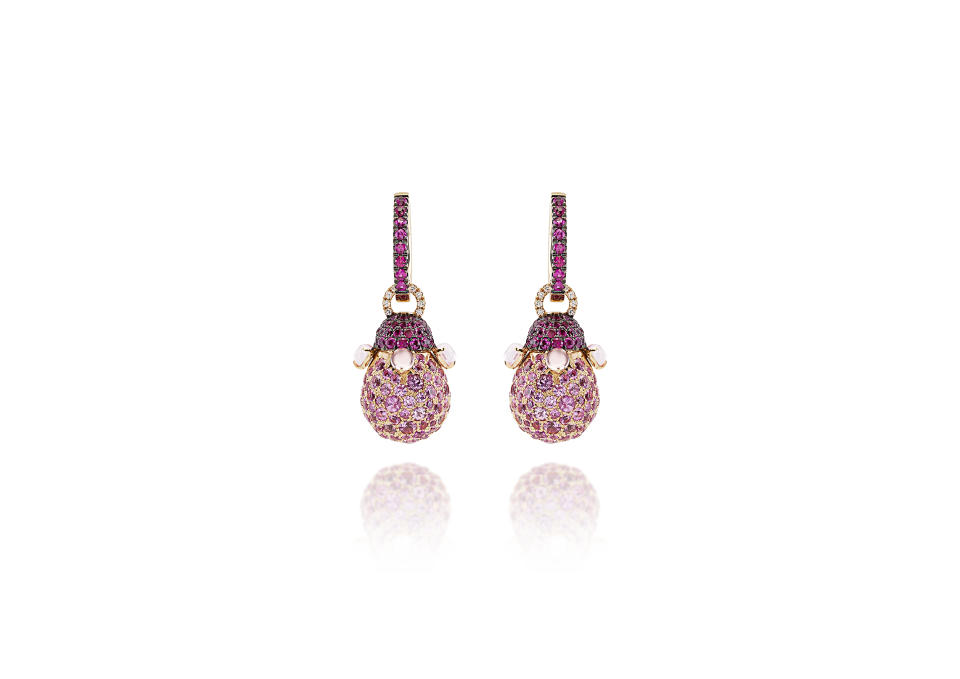
“We’re seeing an increasing interest from younger consumers pretty much everywhere,” said Visconti, pointing especially to Millennials. According to the executive, these shoppers are changing the approach to jewelry shopping. “It’s not much about having particular requests design-wise but rather in the service: they are much more aware and do research before stepping into a jewelry store… and demand more technical information from a sales assistant, which is a very different approach compared to the past.”
For Coin, the target is even younger, as he pointed out his brand’s wearers are ages 10 and up. The executive said that over the past few years the company has tackled a young market with more accessible prices but never at the expense of “beauty, which can’t depend on pricing.”
Gismondi agreed, underscoring that even if the group’s main line will point to a higher positioning, more democratic prices will still be offered, as well as tailor-made creations. “Also because you never know if the person who now is spending 1,000 euros one day will spend 10 or 100 times fold. The important thing is to establish the relationship. It’s an investment and part of our prime value of respecting the person,” said the executive.
Collections at the fair displayed this duality between statement pieces and more approachable lines, which stood out with geometric and graphic designs imbued with a more contemporary appeal.
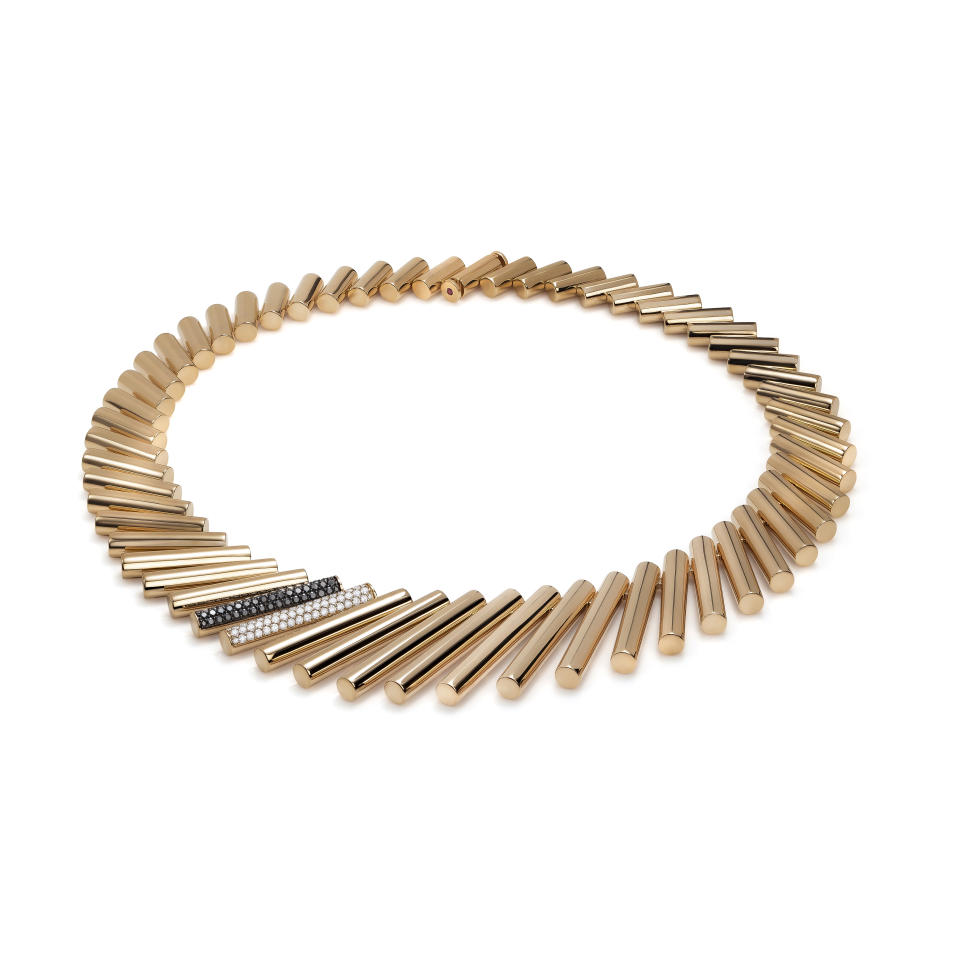
These included bangles and necklaces playing with minimal shapes and flexible structures. Prime examples included Roberto Coin’s new Domino collection with necklaces, rings and earrings with yellow, rose or white gold elements, occasionally covered with white or black diamonds, for a graphic yet impactful effect. Also from the brand, the Sauvage Privé range featured bolder geometries and cuts, enhanced by the introduction of black jade and malachite.
An expert in crafting statement jewelry with a sculptural sensibility, Vhernier was a special guest at the trade show, where it teased the new Ardis collection that will hit stores in March. Its curved, voluminous silhouette crossed by gold lines and diamonds ensured an effortless wearability, also thanks to its lightweight structure in aluminum, seen as a better alternative to titanium and featuring a distinctive matte finish and chic light gray shade.
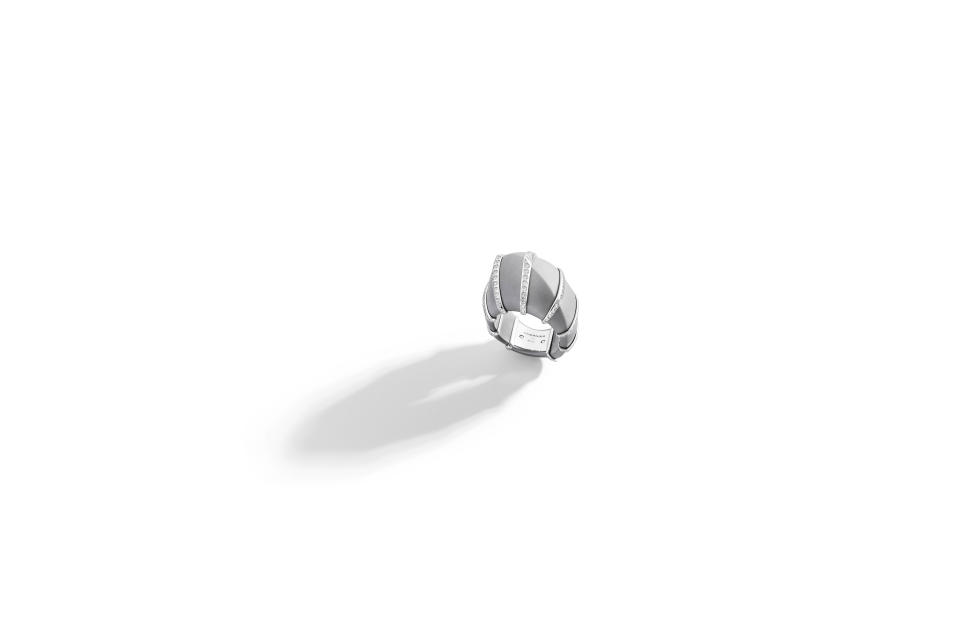
A similar approach to three-dimensional creations also informed the Vendorafa offering, like the Ghibli necklace crafted in gold and diamonds. Despite the big volumes and geometries, many pieces played with sinuous lines enveloping the body. Cue to Visconti’s new Like Me collection displaying more feminine silhouettes ranging from spiraling ovals to hearts. Coming in white or rose gold, these are enriched with diamond pavés and pops of color thanks to the addition of emeralds, rubies and sapphires.
Salvini’s Magia Garden collection in white gold and diamonds shared the approach with a focus on a floral theme. With its delicate and youthful appeal, it made for a new proposition winking to younger customers from the brand, which is under the Damiani Group, set to celebrate its 100th anniversary this year.
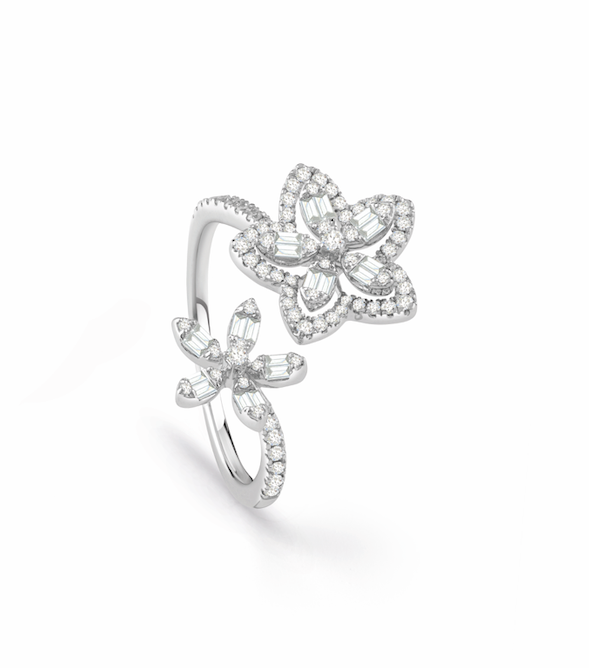
The namesake brand of the group — which also owns the Bliss and Calderoni jewelry labels — Damiani updated its signature Belle Époque crosses, instead, to tap into the ever-increasing cluster of male jewelry consumers. To this end, the flexible shape was turned more gender-fluid by alternating black and white diamonds and sporting a slightly chunkier chain.
At her first presence at VicenzaOro, young jeweler Lavinia Fuksas also grasped the importance of flanking her custom-made, cage-like and sculptural creations with entry-price lines and more affordable iterations, like enameled rings or openwork earrings priced around 180 euros.
“At first, I was really committed into creating every piece in 18-karat gold, but for example in the case of the rings, since they are enameled, I offer them also in 9-karat gold to ensure a more democratic pricing,” she said.
The experience at VicenzaOro was profitable for her in terms of networking, understanding further mechanisms of the industrialization behind jewelry, as well as positioning the brand she established in 2020 in a different way in the eyes of the industry. Now she looks to expand physical distribution, especially in the U.S., as well as continue to experiment with product development beyond her high-end creations in diamonds and precious stones such as malachite or lapis.
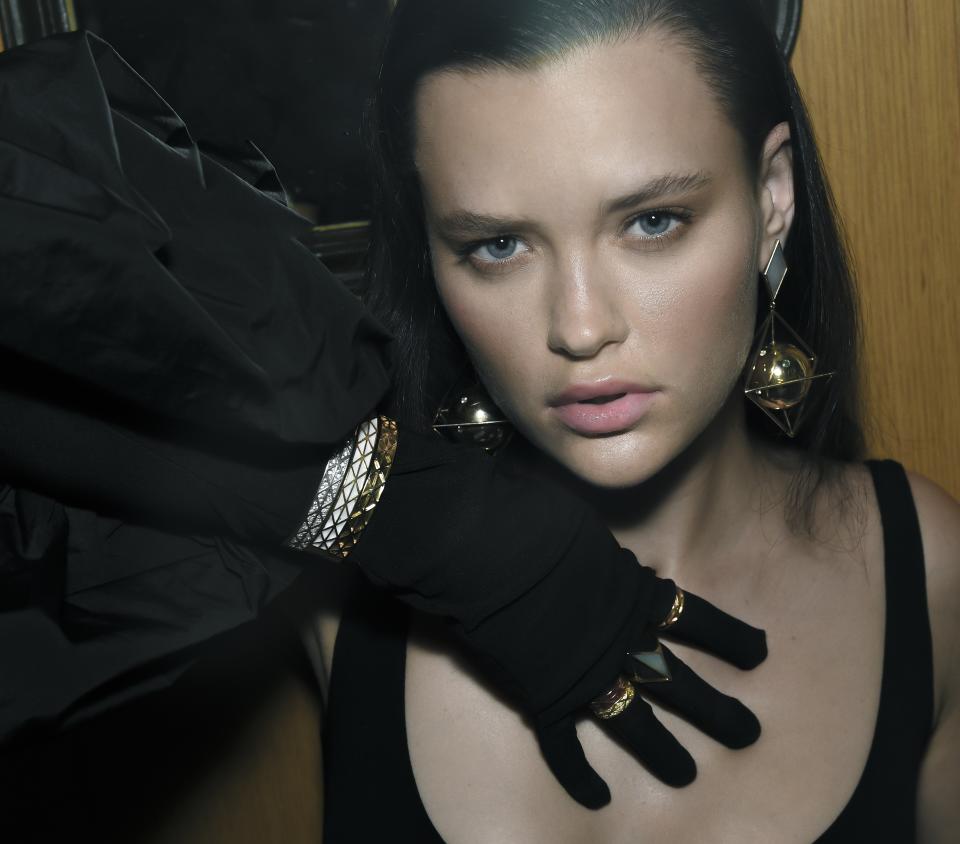
The next edition of VicenzaOro will take place Sept. 6 to 10. To further enhance the attractiveness of the fair, Carniello said the 70th anniversary will be celebrated with big investments across different areas. Structure-wise, the fair organizer invested 60 million euros to renovate a pavilion originally opened in 1971, with the revamped 236,806-square-foot space to be unveiled in September 2026.
There were be more focus on sections dedicated to watches and a vintage offering. “Since the gap left from the Basel show, there’s a demand for a new platform for this category, maybe not for big brands but for new ones for sure,” said Carniello, who added that the vintage section is also trending and saw exhibitors and visitors increasing 22 percent and 13 percent, respectively, this edition.
Additional content will also be ensured starting from September 2025, when the first “The Vicenza Symposium” will be held in the lead-up to the trade show. Substituting the former U.S.-based Santa Fe Symposium, the biennial event will focus on discussing innovation and R&D solutions to apply in the jewelry industry.
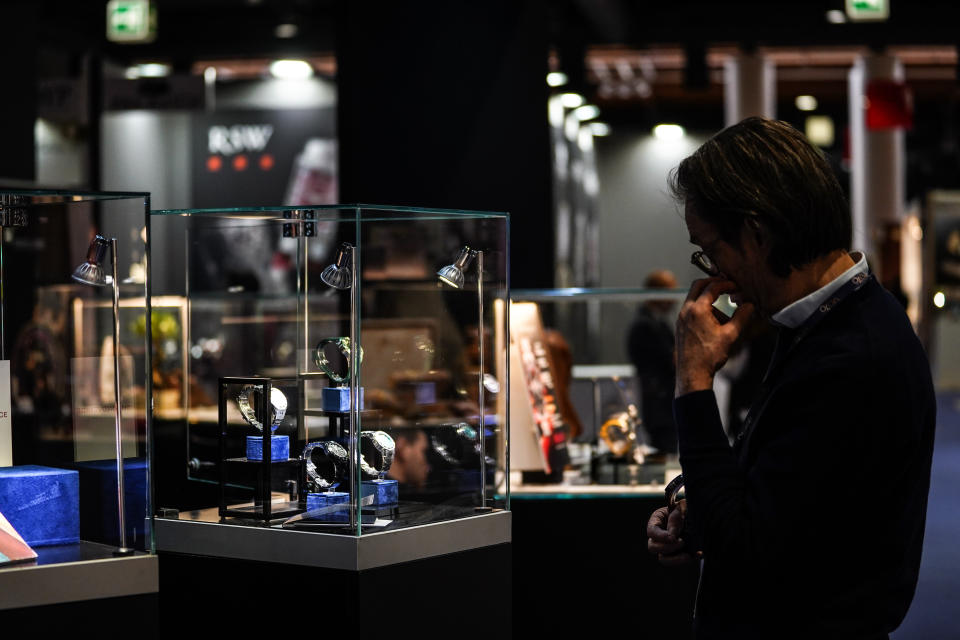
Best of WWD


